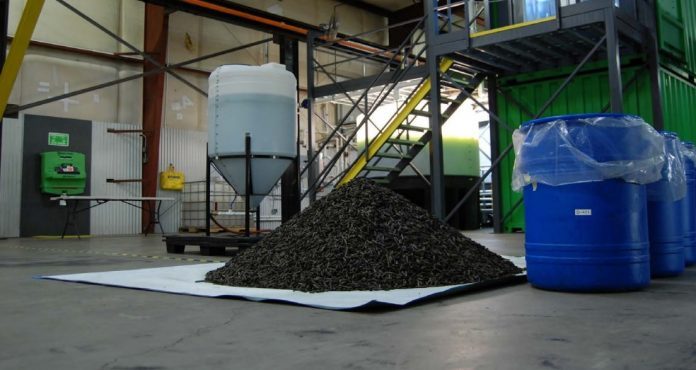A Canadian report and a Columbia University writer suggest getting aquaculture to endure well into the coming decades means today’s feed ought to be supplemented with more algae and less bycatch, reconstituted farmed fish or soya.
With a U.N. agency saying two-thirds of fish eaten in 2030 will to be farmed, the concern is twofold: too many dinners won’t contain Omega-3 fatty acids and too much ocean biomass will go toward feed.
Researchers — and a well-positioned feed company — are calling for new types of feed.
“While (salmon) are known for their omega-3 fatty acid benefits, they do not actually produce omega-3s themselves. Microscopic algae that live in fresh or salt water or sediments produce them,” writes Colombia University writer, Renee Cho, who picked up on the 200-page report on aquaculture sustainability that’s a good read for feed producers and will be read in national resource-management circles worldwide.
Influencial report
The report Standards and the Blue Economy by Winnipeg-based organization, State of Sustainability Initiatives, explores aquafeed certification schemes affecting the feed market but is aimed at buyers and producers’ own “voluntary standards”. It appears to have had finance from the Swiss Department of Economic Affairs, Education and Research.
Australian-based Algae.Tec appears to have read the report and is gearing up to start delivering algae-based feed by raising capital.
“The 2017 aquafeed market is valued at more than USD100 billion and USD75 million tonnes (of) demand with industry projections reporting continued strong growth rates at 12 percent per year,” a company document says, adding, for comparison, that the global (high-end) animal feed market is still “just” USD25 billion.
See Feed additives market to top USD 179 Mn
Algae.Tec reports bulk feed prices in range from US$15 to over US$100 per kilogram, depending on the species of algae used and whether it’s biomass, oil or “extracts”. Similarly, a BioMar spokesperson recently told Salmon Business that it, too, was only targeting high-end farms. In the Canadian report, high-end also implies “certified” feed is used, and it lists the world’s salmon farms as among the most compliant and self-regulated, citing the business’s many corporate players.
More algae
World algae production is still “90 percent open cultivation”, a limit to quality controls in countries that dominate production, like China and the United States. Algae.Tec produces the six species useable algae in closed plant.
The six are what plant-eating fish like sardines, anchovies and herring eat before they, in turn, are eaten by salmon that pass Omega-3 on to humans. The need to get Omega-3 into salmon is why they need high-grade feed.
“Thirty to 50 percent of the fish feed traditionally used for these species consists of fishmeal and fish oil,” writes Cho, adding that over 50 percent of the world’s fish oil is used in feed for farmed salmon: “This is one reason that aquaculture has a reputation as being unsustainable. A third of the global fish harvest still goes toward making fish meal and fish oil. As a result, forage fish are being overfished.”
The report focuses on standards, and Cho mentions “land-based” closed systems for minimizing “the amount of waste and nutrients expelled to the environment” and eliminating “fish escapes”. Both take a topical look at aquaculture methods.
Neither Cho nor the Report tackles the money-losing still associated with land-based facilities, but the use of fish production scrapings in feed is touched-on as a good thing.
As we published this story, the U.S. government was awarding a million dollars in grants to four university aquaculture feed projects.


